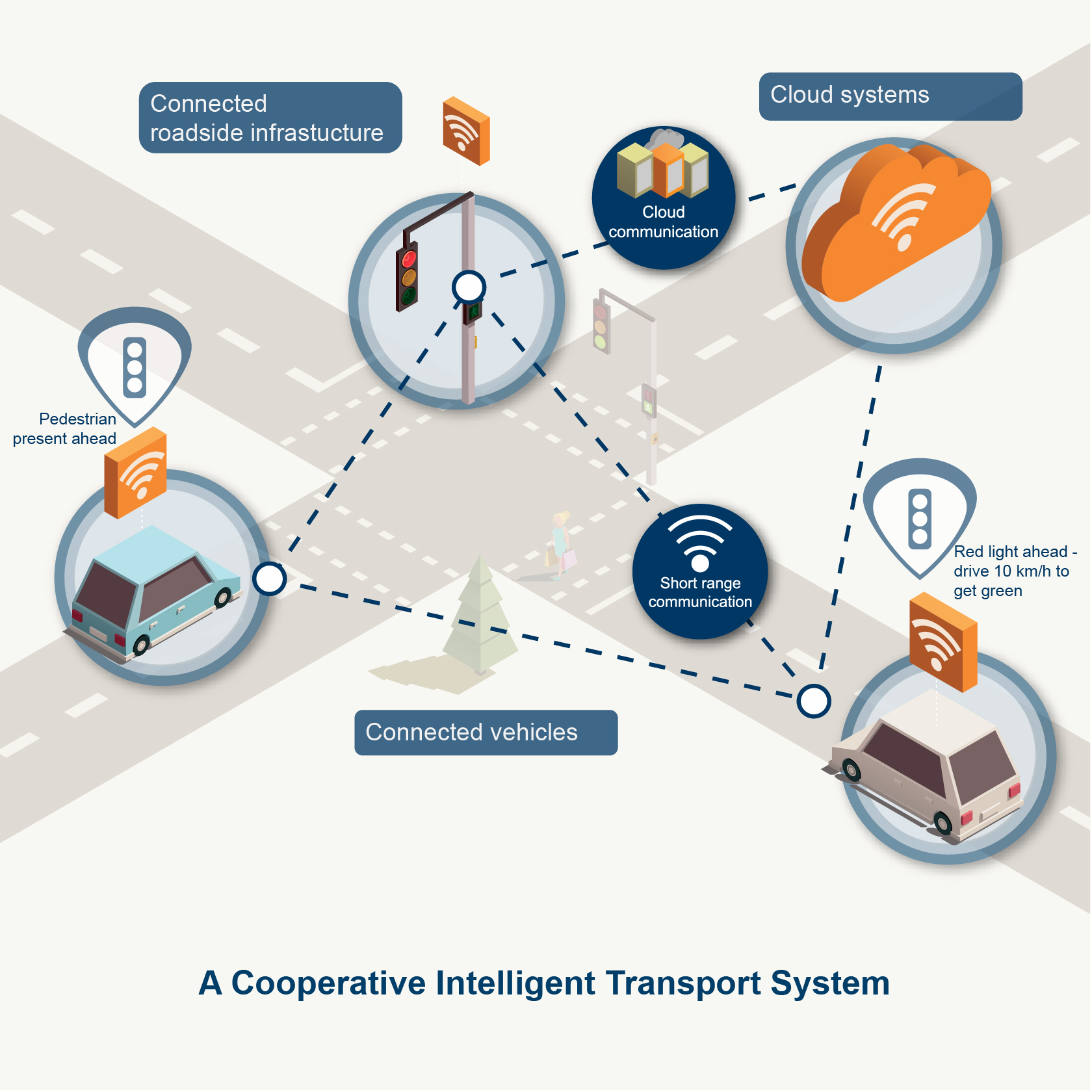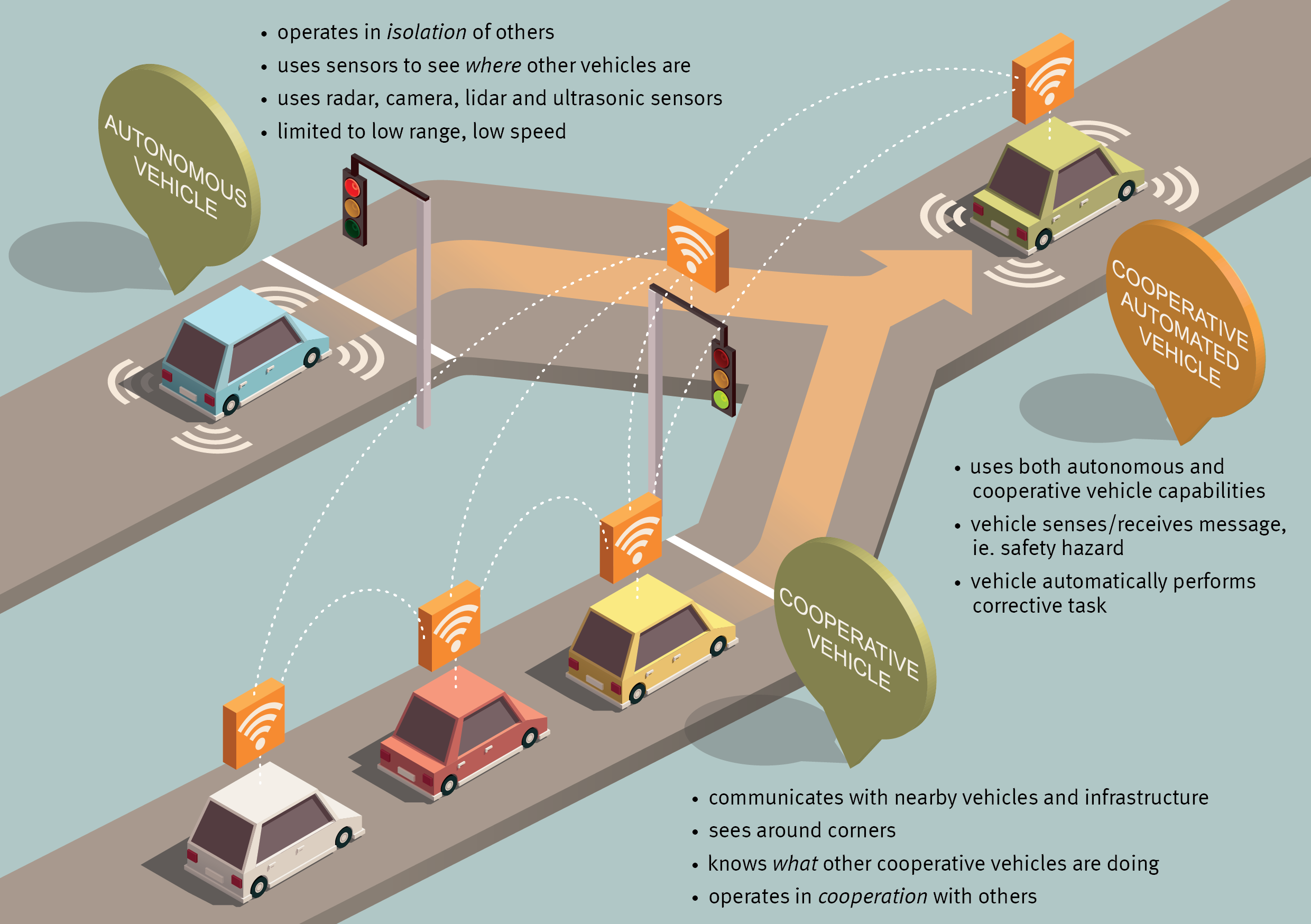Connected vehicles
What is a connected vehicle?

Diagram of a cooperative intelligent transport system.
View a text based version of this diagram.
A connected vehicle (also known as cooperative vehicle) talks to other connected vehicles, roadside infrastructure (like traffic lights) and traffic management systems within the Cooperative Intelligent Transport System (C-ITS).
This technology is also known as:
- vehicle-to-vehicle communications (V2V)
- vehicle-to-infrastructure communications (V2I)
- vehicle-to-other (V2X).
Within the vehicle, this information is used to generate alerts that are provided to the driver as audible, visual or haptic (vibration). The driver is still in control of the vehicle, and there is no element of vehicle automation.
Connected vehicles don’t depend on line-of-sight communications to work, C-ITS increases the quality and reliability of information available to drivers about their immediate environment. A driver may receive an alert even though they can't see the vehicle or aren’t aware of the developing dangerous situation. They use short range communications to provide drivers with virtual 360-degree awareness of other connected vehicles and infrastructure, within a range of approximately 300m.
Benefits of a connected system
Central systems, such as a traffic management centre, use 3G/4G signals to provide information to connected vehicles and infrastructure over a wide area network. This information helps us observe and assess what is happening on our roads, building a picture of real-time traffic situations.
We can then respond to the traffic situation in a number of ways such as providing warning messages to drivers via variable message signs, reducing variable speed limits and updating available traveller information.
Safety
- Driver warnings have potential to reduce number, and severity of crashes
Efficiency and sustainability
- Providing information to drivers about upcoming congestion, crashes or road closures
- Turning a red-light green when it's safe to do so
- Telling drivers what speed to travel to maximise chances of getting a green light
Accessibility and mobility
- Can help seniors and people with a disability to access the transport network. For example, wireless devices can communicate with traffic signals to give people more time to cross the road safely at pedestrian crossings.
Preparing for connected vehicles
The Department of Transport and Main Roads is preparing for connected vehicles through delivery of the Ipswich Connected Vehicle Pilot. This pilot is leading the way in exploring this technology in Australia.
Connected Vehicles on Queensland roads
Vehicles currently operating on Queensland roads can't talk to other connected vehicles, roadside infrastructure (like traffic lights) and traffic management systems. Connected technology is increasingly found in overseas vehicles, it is expected vehicles with elements of connected technology will be on Australian roads in the next 5 years.
Connected vehicles are available in some vehicles in countries such as the USA and Japan. For example, in Japan, the Toyota Prius provides drivers with:
- a right turn collision warning
- red light caution
- traffic signal advisory change
- an emergency vehicle notification.
What's next?

Journey to Cooperative and Automated Vehicles diagram.
View a text based version of this diagram.
To realise greater safety benefits, it is expected connected vehicle technology will converge with automated vehicle technology, known as Connected and Automated Vehicles.
An automated vehicle can’t see around corners or through objects, and car sensors are limited in high speed environments. C-ITS will expand the vehicle's view with additional shared safety messages, and depending on level of vehicle automation, either the driver or the vehicle will perform the safety action required, following the message being received.


